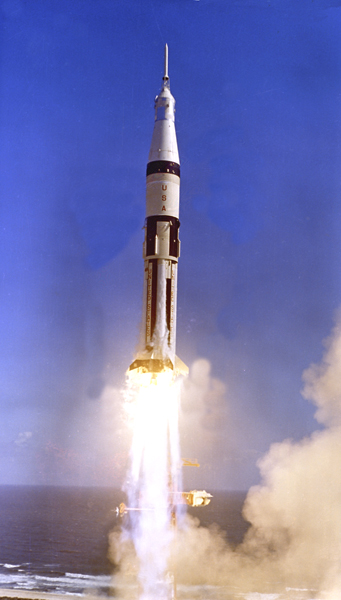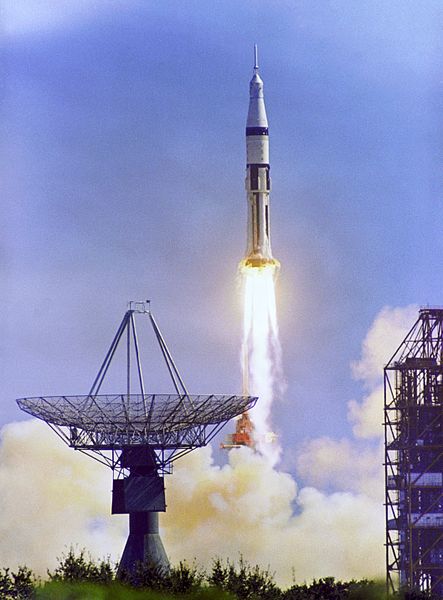This is it. 50 years ago today on October 11th, 1968 the manned portion of the Apollo Program began with the launch of Apollo 7, a mission designed to test the newly redesigned Apollo Command / Service Module in Earth orbit with an actual crew for up to 2 weeks – the estimated length of the longest mission to the Moon which was planned at that time. This mission comes just over 18 months since the Apollo 1 fire which killed that missions prime crew – Gus Grissom, Ed White, and Roger Chaffee. The prime crew for what would become Apollo 7 was actually the backup crew of Apollo 1, consisting of veteran Mercury and Gemini astronaut Wally Schirra and rookies Donn Eisele and Walter Cunningham.
After the Apollo 1 fire thousands of changes were made to the Apollo Command Module in the name of safety and what was originally planned as a pair of test missions in the older “Block I” spacecraft were condensed into a single “Block II” spacecraft test in the form of the Apollo 7 mission – Block II being designed for the actual lunar missions as planned and being built with the safety lessons learned from Apollo 1 in mind.
Apollo 7 was only an Earth orbital mission. Instead of using the massive Saturn V booster, which had been used to launch the unmanned Apollo 4 and 6 missions the previous year, it was launched on the Smaller Saturn 1B booster from Launch Complex 34 at Cape Canaveral (then Kennedy) Air Force Station, rather than Launch Complex 39 at Kennedy Space Center.

This mission would go down as a major success barring a few anomalies, none of which were critical and many actually being unique to this mission and not even a concern on future flights. It would, however, be the end of space flight for Schirra, and mark the only flight of his 2 crewmates due to a rather legendary “mutiny” which happened while on orbit. The crew all had head colds and as the mission progressed they became quite irritable, eventually refusing to perform tasks asked of them by mission control! This would culminate on the return to Earth when due to the pressure they felt in their sinuses from the colds they had the crew refused to put on their helmets during re-entry, a procedure deemed necessary for safety but one which the crew felt would be simply too much to contend with alongside the irritation they already felt.
Naturally, all of this didn’t sit well with the higher-ups at NASA, and that was the end of that.
The success of Apollo 7 would set up the beginning of an amazing 14 month span from October 1968 to December 1969 where we would see not only Apollo 7 launch but also Apollo 8, 9, 10, 11, and 12! 4 of these launches happing in 1969 alone would be amazing but to go in less than a year from having still not flown a crew on Apollo to landing on the Moon not once but twice!? That’s incredible, to say the least.

I’ll have more on the mission of Apollo 7 in the near future, but for now, enjoy the launch! This mission marked the only time a crew would launch from Pad 34 and indeed this would be the final launch ever from that pad. Following Apollo 7 it would be “mothballed” until the end of the Apollo program where it would be stripped of equipment and “abandoned in place” as a memorial to the Apollo 1 crew – the fire having happened at that very pad in 1967.
For now, however, the launch of Apollo 7! Enjoy!
Oh, as an aside, this article was published at the same time as the launch 50 years ago. Isn’t post scheduling just the best?
